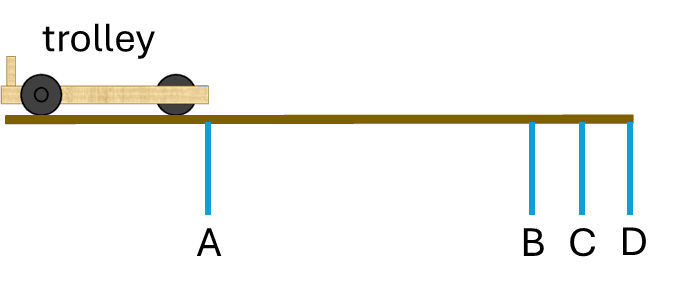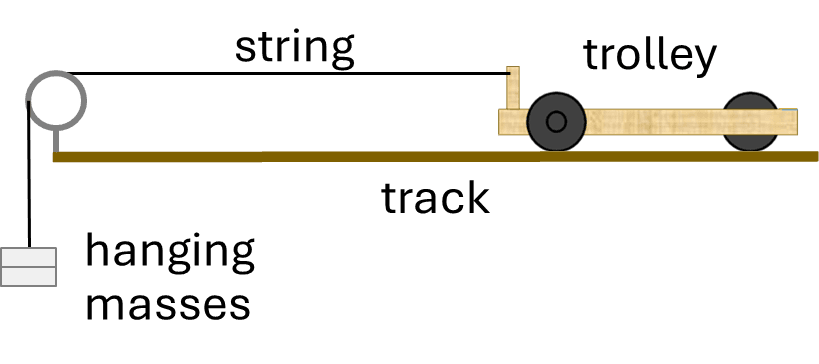

Measuring acceleration analysis (v = s ÷ t, a = (v – u) ÷ t)
I can explain how to measure acceleration accurately.


Measuring acceleration analysis (v = s ÷ t, a = (v – u) ÷ t)
I can explain how to measure acceleration accurately.
These resources will be removed by end of Summer Term 2025.
Lesson details
Key learning points
- A dynamics trolley has a steady acceleration down a steep ramp.
- Acceleration = change of velocity ÷ time and change in velocity = final velocity – initial velocity
- Light gates can improve accuracy of measurement of instantaneous velocity and reduces random errors.
- For a fair test, total mass of the system must be kept constant.
- A compensated ramp can counteract the effect of friction.
Keywords
Compensated ramp - A ramp with a slope to counteract the effect of friction.
Final velocity - The final velocity of an object is the velocity it finishes with after a phase of motion.
Light gate - A light gate can be used to measure velocity. It uses an infrared beam to turn a timer on and off as an object passes through.
Repeatable - Measurements are repeatable if they are very similar when the same procedure is carried out by the same person or team.
Uniform acceleration - When the acceleration is constant, it is described as uniform acceleration.
Common misconception
Pupils may compare the accelerations of objects on the basis of final velocities and may fail to take into account the time interval over which the change in velocity occurred.
Provide pupils with opportunity to analyse measurements of changes in velocity in which the starting velocities vary. A pair of light gates at two positions along the ramp will allow this.
To help you plan your year 10 combined science lesson on: Measuring acceleration analysis (v = s ÷ t, a = (v – u) ÷ t), download all teaching resources for free and adapt to suit your pupils' needs...
To help you plan your year 10 combined science lesson on: Measuring acceleration analysis (v = s ÷ t, a = (v – u) ÷ t), download all teaching resources for free and adapt to suit your pupils' needs.
The starter quiz will activate and check your pupils' prior knowledge, with versions available both with and without answers in PDF format.
We use learning cycles to break down learning into key concepts or ideas linked to the learning outcome. Each learning cycle features explanations with checks for understanding and practice tasks with feedback. All of this is found in our slide decks, ready for you to download and edit. The practice tasks are also available as printable worksheets and some lessons have additional materials with extra material you might need for teaching the lesson.
The assessment exit quiz will test your pupils' understanding of the key learning points.
Our video is a tool for planning, showing how other teachers might teach the lesson, offering helpful tips, modelled explanations and inspiration for your own delivery in the classroom. Plus, you can set it as homework or revision for pupils and keep their learning on track by sharing an online pupil version of this lesson.
Explore more key stage 4 combined science lessons from the Measuring and calculating motion unit, dive into the full secondary combined science curriculum, or learn more about lesson planning.

Licence
Starter quiz
6 Questions

Exit quiz
6 Questions



